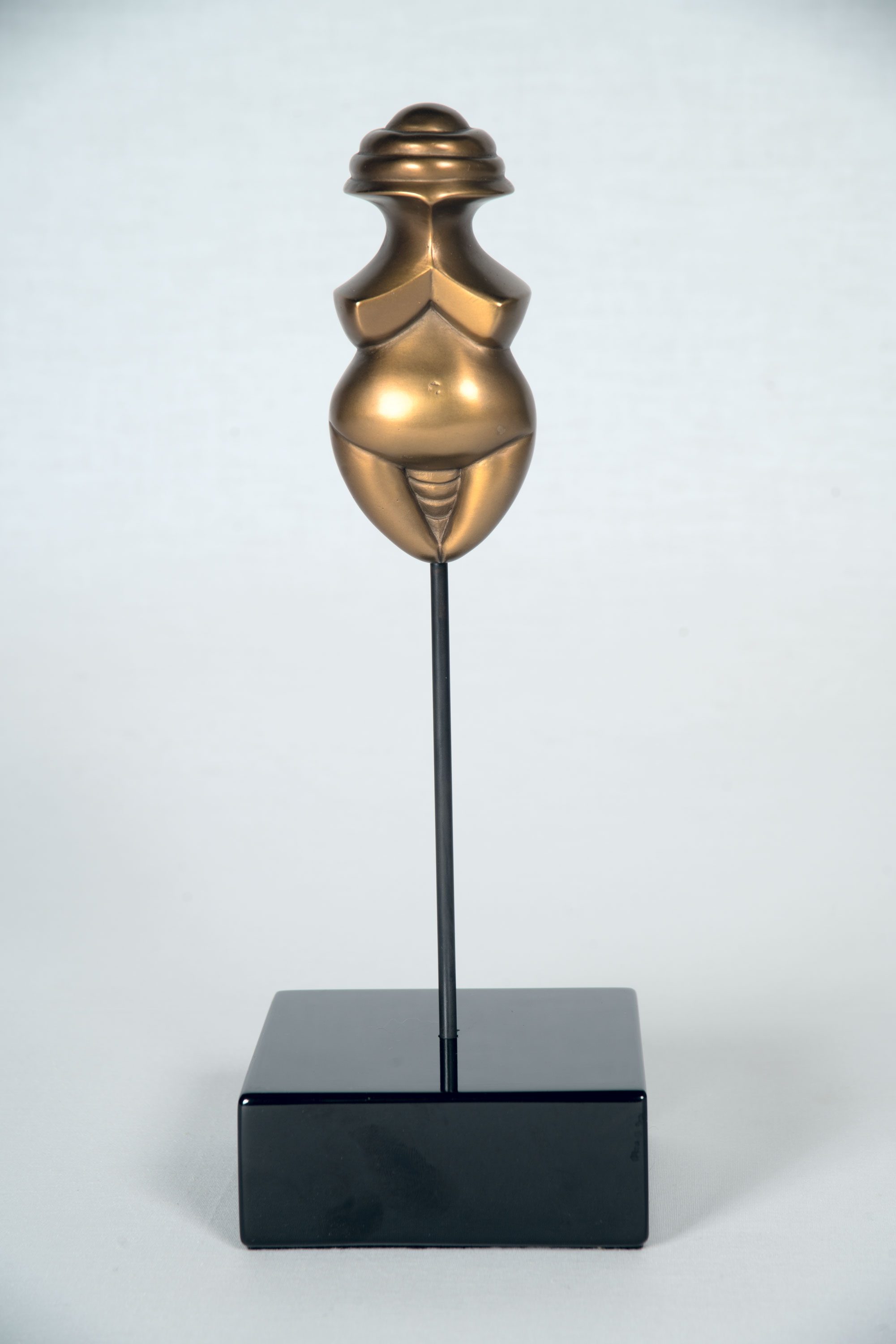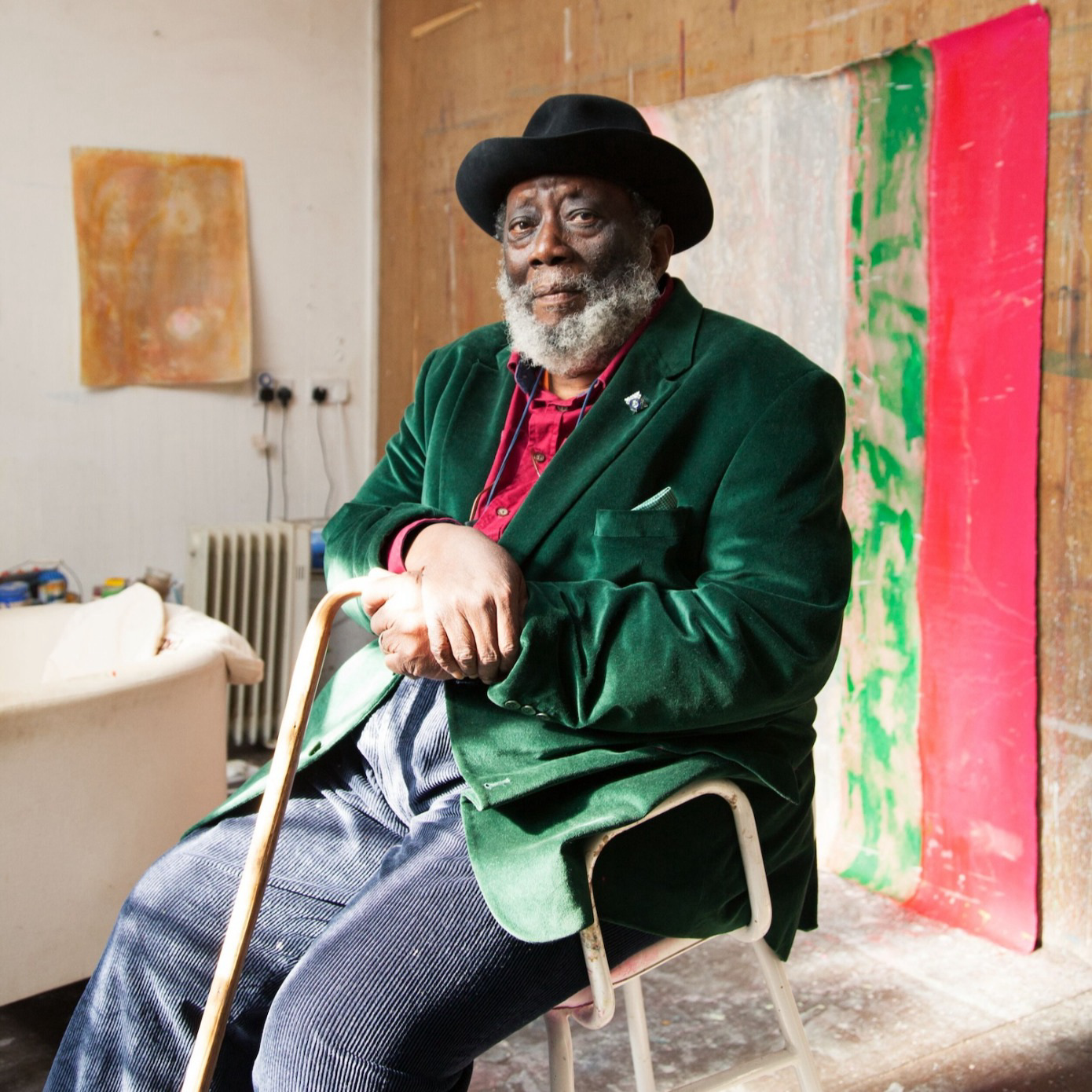
A pioneer of feminist art, Judy Chicago embraces the female body as a source of divinity. For our latest Cultured Commission, we partnered with Prospect NY to present the artist’s bronze reimagination of the iconic Venus of Willendorf. Here she answered our questions about the thoughts behind it.
With so much of your work functioning on a particularly large scale, especially The Dinner Party, how does your thinking shift when creating a piece like this? Actually, I have gone back and forth between monumental and intimate work throughout my career. By the time I conceived of The Dinner Party, I had already made a number of large-scale sculptures and paintings along with my Atmospheres, the fireworks pieces I presented in parks, deserts, beaches, forests, construction sites and museums. The primary difference in scale for me is the number of people it will require to realize my creative vision.
You’ve worked in bronze just a few times before. Can you tell us a little about working with this medium in creating a woman’s body as opposed to the other materials you generally work with? Why did you choose bronze for this piece? The first time I worked in bronze was in 1987, when I did a series of bronze reliefs as part of PowerPlay, my examination of the construct of masculinity and how it has produced what we are seeing too often today, that is, its outcome, toxic masculinity. In 2003, I started working in glass and by the time of my second series, the Toby Heads, I had begun to integrate two techniques I had used before: bronze and china-painted porcelain. Then I did a large series titled Heads Up which includes a number of bronzes along with pieces that combine glass and bronze. By the time I started The End: A Meditation on Death and Extinction, I knew that I wanted to use glass, porcelain and bronze.
How has the critical response to your work changed as politically charged art moves into the foreground of the contemporary sphere? I think it's very important to state that I have always tried to make art that transcends its political moment. Thus, despite claims in the 1990s that we live in a post-feminist era, I always knew that was not true. So it was no surprise to me that once The Dinner Party was permanently housed at the Elizabeth A. Sackler Center for Feminist Art in 2007, it would account for 20% of the museum visitors. There is a hunger among women for images that affirm us and a growing interest among men especially younger men for another path, one that feminism and feminist art provides.
I recently posted on my Instagram a juxtaposition of my painting Three Faces of Man in relation to the "toxic masculinity" on display in the U.S. Congress because it was both painful and gratifying that my series, PowerPlay, which was not understood when it was first displayed in 1987, had become all too real for our nation. I don't know—people keep saying that I have been ahead of my time. Perhaps that is true and that is the reason that the work I've done in the last three decades is not yet widely known.
We’re in this moment where women’s voices are being met with both praise on one side and vitriol on the other. Do you find yourself approaching your work in the Trump era differently than when you began your career? I am the same artist now as when I started—with the same goals. Since the beginning of my career, although I have worked on a variety of subjects in a range of techniques, I have not swerved from my path as an artist, which has involved trying to make a contribution as an artist. For the second two decades of my career, what it means to be female was my focus but gradually, my perspective widened to include an investigation of the gender construct of masculinity—PowerPlay: how patriarchal values led to the Holocaust (Holocaust Project) or what Virginia Woolf called "patriarchy gone mad"; human values (Resolutions: A Stitch in Time); and more recently, The End: A Meditation on Death and Extinction. But in all of these projects, I brought a steadily expanding feminist gaze.
And one side note, I grew up in the shadow of McCarthyism. My father was drummed out of his job and his beloved union work, which caused his death. This is not the first time in American history that the country has gone off the rails. I have to hope that before too long, the United States will right itself. Art has a role to play in changing the cultural dialogue which involves providing new ways of seeing the world; that is what I hope my work does.
With your first major retrospective happening at the ICA, and the subsequent shows at the National Museum of Women in the Arts and Deitch’s new space, do you see long-term changes resulting from resurgence in radical women-centered art? First, the ICA show is not a retrospective; it is a survey of the first three decades of my career though it does not include the Holocaust Project which my husband, photographer Donald Woodman, and I spent 8 years on BEFORE I did Autobiography of a Year, which is from 1993/94 and is included in the exhibition. As to the question about "radical woman-centered art," why is female-centered art considered "radical?" It is only because we have been educated to believe that male-centered art is universal. But it is not. The history of art, as glorious as it can be, represents a long historic tradition of men's perspective. Even when a woman managed to intercede, her work was often erased. Yes, I have been intent on creating a female-centered iconography because I believe that it is an important step towards gender equality. Only when women have equal space in museums, equal pay at work and equal power in the political sphere will we be able to say that real equality has been achieved. And we're not there yet, that's for sure—in fact, at the moment, we're sliding backwards. But that is the nature of change; push forward/push backward and we're in a terrible period of pushback. Jill Soloway likes to say that her goal is to "topple the patriarchy"—although I admire her aspirations, I don't think that is going to happen very soon. In the meantime, we just have to put one foot in front of another, or in my case, one brushstroke next to another and carry on fighting for change.




